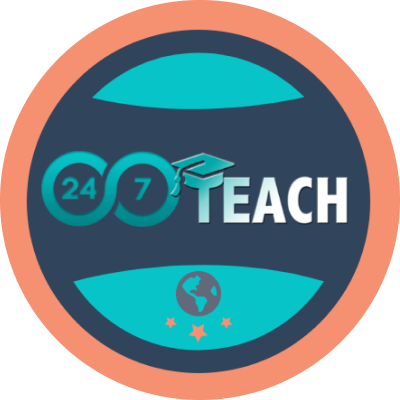Lesson 4: Mortgages - Financing Your Real Estate Deals
Prefer to listen to this lesson? Click here.
Workshop Scenario
As you work through this lesson, please think of yourself in the following scenario:
You’ve decided to be the youngest Real Estate investor in your community. You realize that if you are successful, you can become wealthy and retire at an early age.
Your goal is to learn as much as possible about real estate and real estate investing now so that you can own seven (7) properties by the time you are 21.
In the previous lesson, you took a look at why investing early is vital. Next, you will be introduced to basic Real Estate Mortgages (Loans).
Lesson Objective
Classify different types of mortgage loans.
As you read, please consider the following questions:
What is a mortgage?
What are the different types of mortgages?
Why do so many types of mortgages exist?
First things first, let us review some important vocabulary you will need to know in the lesson.
Mortgages: Types of loans used to purchase or maintain a home, land, or other types of real estate.
Lender: A lender is an individual, a group (public or private), or a financial institution that makes funds available to a person or business with the expectation that the funds will be repaid.
Principal: The original sum of money borrowed in a loan or put into an investment.
Interest: Interest is the monetary charge for the privilege of borrowing money
Collateral: The term collateral refers to an asset that a lender accepts as security for a loan. Collateral may take the form of real estate or other kinds of assets, depending on the purpose of the loan.
Amortization: Paying off a debt over time in equal installments. Part of each payment goes toward the loan principal, and part goes toward interest.
Mortgage Loans 101:
Mortgages are types of loans used to purchase or maintain a home, land, or other types of real estate. The borrower agrees to pay the lender over time, typically in a series of regular payments that are divided into principal and interest. The property then serves as collateral to secure the loan.
Whether you are a first-time home buyer or a real estate investor, home loans are essential for building a successful real estate portfolio. Understanding the different types of real estate loans will help you determine a budget, calculate a down payment, and discuss loan options with a lender. Here are eight basic types of mortgages you should be familiar with as a real estate professional and investor.
The Five Basic Mortgage Loans:
1. Conventional Loan / Fixed Rate Mortgage
Conventional loans are not guaranteed or insured by the government. These are typically fixed in terms (10, 15, 20, 30 & 40 years) and rate. There are two types of conventional loans; conforming and non-conforming loans. Conforming loans fall within the maximum limits set by the government i.e. less than about $700,000. Anything above the limit may be considered a “Jumbo Loan” and thus, non-conforming with government limits. These typically have higher rates and require more hoops to jump through for qualification.
Conventional loans are ideal for people with a good credit history, stable income, and at least 3% of the down payment. You will likely pay mortgage insurance if your down payment is less than 20%.
2. Government-Insured Loans
Three government agencies help buyers with mortgages: The Federal Housing Administration (FHA Loans), the U.S. Department of Agriculture (USDA Loans), and the U.S. Department of Veterans Affairs (VA Loans).
FHA Loans can be as little as 3.5% down, depending on credit. FHA Loans require two mortgage premiums, one paid up front and the other paid annually with under a 10% down payment. Private mortgage insurance (PMI) is required until you have at least 20% equity in your home.
VA Loans are provided to U.S. Military (active duty and veterans) and their families. They don’t require a down payment or PMI, but a funding fee is charged as a percentage of the loan.
USDA Loans help those living in rural, USDA-eligible areas secure a mortgage. Depending on income level, some USDA loans don’t require a down payment. Upfront mortgage insurance is 1% with a 0.35% annual fee paid in monthly installments.
3. Adjustable Rate Mortgages (ARMs)
An adjustable-rate mortgage has a fluctuating interest rate that is depending on market conditions and lender terms. Many ARM products have a fixed rate for the first few years and then reset to variable rates, sometimes with a cap. If you don’t plan to stay in your home for more than a few years, this could save you on interest rate payments.
4. Interest Only Mortgage
In some cases, a lender can give you an interest-only mortgage in which you only pay for the interest for the first 5 or 10 years. After that period, it reverts to a conventional mortgage with fixed rates. This will take longer to pay off but can be useful if you are having trouble with the monthly payments.
5. Seller Carryback Financing
In a buyer’s market, sellers can often entice buyers with special concessions to get a deal done. One of which is seller carryback financing. In this case, the seller acts as the bank or lender and obtains a second mortgage on the property in addition to the buyer’s initial mortgage. Each month, the buyer pays off both mortgages. This may also be referred to as owner financing or seller financing.
Mortgages used specifically for Real Estate Investing or Farming:
6. Owner-Occupied Loan
The buyer can obtain an owner-occupied loan if the property in question is a duplex or multifamily home. In this case, buyers can use the rental income from the property to underwrite the loan with higher loan limits. The property must have signed rental lease agreements so that payments can be verified. These are considered investment properties, so private lenders may require higher down payments, typically between 25-30 percent down. The VA and FHA will also work with buyers on owner-occupied loans.
7. Agricultural Loans
Agricultural loans are available for properties with 10 or more acres and have no restrictions for owner vs. non-owner occupied. These include properties with orchards, farms, vineyards, and more.
8. Hard Money Loan
Hard money loans, sometimes referred to as bridges, are short-term lending instruments that real estate investors can use to finance an investment project. This type of loan is often a tool for house flippers or real estate developers whose goal is to renovate or develop a property, then sell it for a profit. Hard money loans are issued by private lenders rather than mainstream financial institutions such as banks.
Unlike traditional bank loans, the ability to obtain hard money financing isn’t determined by the borrower's creditworthiness. Instead, hard money lenders use the value of the property itself in determining whether to make the loan. Specifically, lenders focus on the “after repair value,” or ARV, which is an estimate of what the property will be worth once the renovation or development phase is complete.
In Conclusion:
Mortgages are an essential part of the home-buying process for most borrowers who aren’t sitting on hundreds of thousands of dollars of cash to buy a property outright. Different types of home loans are available for whatever your circumstances may be. Different government-backed programs make it possible for more people to qualify for mortgages and make their dream of homeownership a reality.
Closing Assessment:
Please respond to the lesson email with answers to the following questions, and one of our real estate mentors will respond with feedback.
What is a mortgage?
What are the different types of mortgages?
Why do so many types of mortgages exist?
Advance your understanding by participating in the 24/7 Discussion Forum:
1. Please answer the following questions in the comment section below and interact with learners from around the world.
What do you think is the hardest part of getting approved for a mortgage, and why?
If my team and I were to apply for a mortgage, which one would it be and why?
2. Please read and reply to other learners’ answers in the forum by stating if you agree or disagree with their answers and why. Your replies should offer new substantiated ideas or thoughtful questions.











